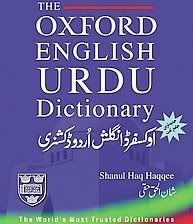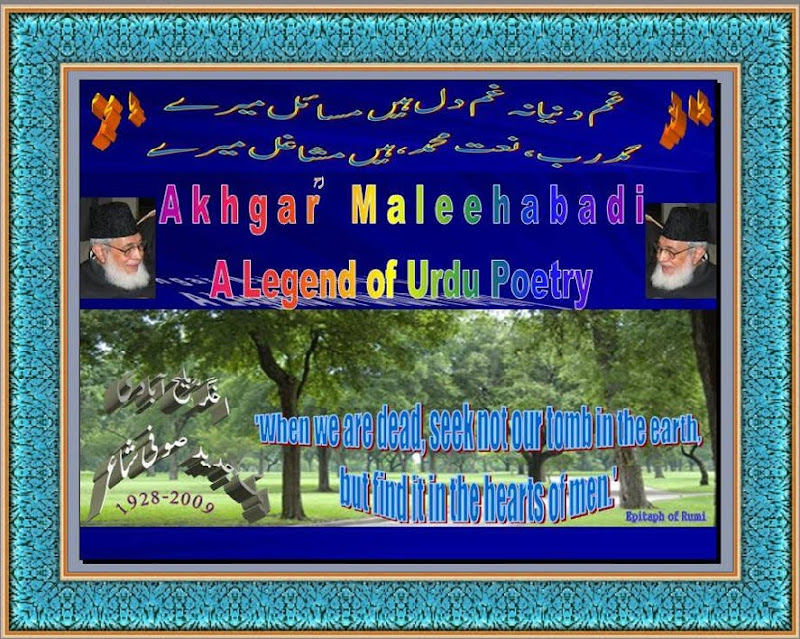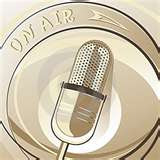Friday, August 28, 2009
Urdu Dictionary Board Project Karachi under Threat: Dr. Rauf Parekh
} catch(err) {}
Dr. Rauf Parekh
Among his other cherished dreams, Sir Syed Ahmed Khan had a dream that Urdu had a comprehensive dictionary. There was none that could truly be called so. Some European scholars had compiled Urdu dictionaries, but they were bilingual ones and lacked the depth and scope Sir Syed dreamed of.



The visionary himself had begun compiling an Urdu dictionary, but left it unfinished apparently because of his preoccupation with other pressing tasks concerning the Muslims of the subcontinent. He, however, attached great importance to a dictionary that enlisted each and every word of the Urdu language. According to Maulana Altaf Hussain Hali, the Scientific Society, Aligarh, had published a sample of Sir Syed’s Urdu dictionary. Renowned French scholar Garcin De Tassy had reviewed the sample quite favourably.
Though Farhang-i-Asifiya, a four-volume dictionary published between 1888 and 1901, had somewhat satisfied the need for a good dictionary, Sir Syed’s dream of an all-encompassing dictionary remained unrealised, and it seemed that after his death the dream had been forgotten till a man stood up and began following it.
Sir Syed’s dream was pursued by none other than Baba-i-Urdu Moulvi Abdul Haq, who embarked upon compiling the most comprehensive dictionary of Urdu single-handedly, though the gigantic task demanded a special institution staffed with linguists and lexicographers and stocked with a library of rare and modern books.
In 1928, the world famous Oxford English Dictionary — the mother of all modern dictionaries — had been published and was considered a rare feat of lexicography as it contained, or so it claimed, each and every word of English with its different shades of meaning and illustrative citations from English writers and poets. Then named A new English dictionary on historical principles, the Oxford English Dictionary took some 70 years to be completed and published. After revision, it now has 20 volumes and is referred to as OED.
Abdul Haq named his dictionary Lughat-i-Kabeer and began working on it in 1930. As an erudite scholar who kept himself abreast with new developments, he had planned that his dictionary would incorporate each and every word of Urdu, be it a term or idiom, whether archaic or obsolete, vulgar or poetic. Abdul Haq had compiled, on the pattern of the OED, several thousand pages before he had to move to Karachi when Pakistan came into being. Here he picked up its threads, but had to face several difficulties and Sir Syed’s dream, shared by many visionaries and scholars such as Abdul Haq, remained elusive.
Finally, in 1958, the federal ministry of education decided that it was time to compile such a dictionary in a more organised manner, and established in Karachi the Taraqqi-i-Urdu Board, or Urdu Development Board, (later Urdu Dictionary Board, UDB) appointing Abdul Haq as its chief editor. With Abdul Haq’s death in 1961, the board began working afresh under the guidance of Shan-ul-Haq Haqqi, modelling its dictionary on historical principles just as Oxford had done.
Each headword was to have illustrative citations from three different periods, beginning with the classical period and culminating at the modern. This principle of citing from different historical periods of language and literature, known as philological principle or historical principle, was first applied by Samuel Johnson in his A dictionary of the English language — the great-grandfather of all modern dictionaries — which he published in 1755.
Haqqi Sahib, the then secretary of the board, was of the view that until the last volume was compiled, the first should not go to press. On the contrary, Oxford, after publishing its first volume in 1884, had to resort to print unbound fascicles making it easier for readers to buy them and get them bound later when a part was completed. But it had a drawback: while compiling the next volumes some rarely used or new words that belonged to the previous volumes were recorded, and Oxford had to publish supplements once it was done with the publishing of the main dictionary.
To avoid that problem, Haqqi Sahib did not go for the printing despite having compiled a few volumes, though they needed finishing touches. But succumbing to the mounting pressure from the government and the public, the board began printing the first volume after necessary amendments and it was published in 1977, though Haqqi Sahib had resigned and Dr Abul-Lais Siddiqui had taken over as the chief editor.
In 1982, the board was renamed as the Urdu Dictionary Board and was asked by the ministry to concentrate only on its flagship dictionary and leave other responsibilities, such as promotion of Urdu, to other institutions. After Dr Siddiqui, from time to time many scholars took over as chief editors, including Dr Farman Fatehpuri, and volume after volume began to come out, contributing to the realisation of a great dream that had by now become a national pride.
A similar scheme was launched in India and several scholars were hired by the Indian government to compile a greater Urdu dictionary. But the project in India could not take off and it was abandoned probably due to lack of political will and Urdu’s comparatively lesser status in India. By now the Indian scholars, too, had begun to look to the UDB for an authentic dictionary despite the fact that many scholars not only from India but also from Pakistan had criticised certain volumes of the dictionary for certain shortcomings.
Even then they waited and still wait for its newer volumes as there had developed a consensus in the Urdu world that in spite of its shortcomings and certain lapses, the UDB’s dictionary was unprecedented. It is the most comprehensive and the most authentic dictionary written in Urdu.
Even Rasheed Hasan Khan, the renowned Indian scholar known for his meticulousness and his criticism of the UDB’s dictionary for some scholarly lapses, especially in the first volume, had acknowledged in an interview after the publication of the dictionary’s 20th volume that it was a great scholarly work.
The UDB has so far published 21 volumes and only the last volume remains. But the government, as is reported in the media, wishes to merge the UDB with some other institutions, jeopardising the future of the dictionary and the UDB itself. It would really be unfortunate if the UDB is merged with any other government institution as it would render it ineffective and inefficient as other government departments are.
The UDB has a great past. It has done an extremely wonderful job by compiling 21 volumes of Urdu’s most comprehensive and authentic dictionary. Sources in the board informed this writer that 448 pages of the 22nd volume — the last one — have already been printed and work on the remaining 300 or so pages is in full swing. The UDB is soon going to achieve the rarest of feats that only English and German can boast of: a dictionary enlisting each and every word of the language on historical principles with citations from thousands of classical and modern sources.
Perhaps somebody is eyeing the precious piece of land the UDB is situated on. Or some unscrupulous, short-sighted section officers have decided to save the government’s few millions that are spent on the UDB every year, not understanding that the job of compiling a dictionary never ends. Some experts go to the extent of saying that a dictionary is obsolete a soon as it leaves the press.
I feel it is an extreme view, but even a conservative estimate shows that a dictionary becomes outdated 10 years after its publication as it needs to record the changes that a language usually goes through over a decade. And revising a dictionary compiled on historical principles and having 22 volumes is no joke. It needs trained, technical hands with vast experience of lexicography, which no institution has in the country other than the UDB.
Moreover, after the publication of the last volume, there still remains to be published an index and a bibliography enlisting the works cited. It would definitely take another volume. Then there is the project of shorter versions of the dictionary and many other spin-offs such as dictionaries of synonyms, antonyms, idioms, proverbs and technical terms.
One sincerely hopes that the UDB will be allowed to work unhindered so that this great project of national importance and a source of national pride is completed befittingly, and Sir Syed’s and Baba-i-Urdu’s dream does not end in a nightmare.
This post also appeared at the Daily Dawn on July 13, 2009
Among his other cherished dreams, Sir Syed Ahmed Khan had a dream that Urdu had a comprehensive dictionary. There was none that could truly be called so. Some European scholars had compiled Urdu dictionaries, but they were bilingual ones and lacked the depth and scope Sir Syed dreamed of.



The visionary himself had begun compiling an Urdu dictionary, but left it unfinished apparently because of his preoccupation with other pressing tasks concerning the Muslims of the subcontinent. He, however, attached great importance to a dictionary that enlisted each and every word of the Urdu language. According to Maulana Altaf Hussain Hali, the Scientific Society, Aligarh, had published a sample of Sir Syed’s Urdu dictionary. Renowned French scholar Garcin De Tassy had reviewed the sample quite favourably.
Though Farhang-i-Asifiya, a four-volume dictionary published between 1888 and 1901, had somewhat satisfied the need for a good dictionary, Sir Syed’s dream of an all-encompassing dictionary remained unrealised, and it seemed that after his death the dream had been forgotten till a man stood up and began following it.
Sir Syed’s dream was pursued by none other than Baba-i-Urdu Moulvi Abdul Haq, who embarked upon compiling the most comprehensive dictionary of Urdu single-handedly, though the gigantic task demanded a special institution staffed with linguists and lexicographers and stocked with a library of rare and modern books.
In 1928, the world famous Oxford English Dictionary — the mother of all modern dictionaries — had been published and was considered a rare feat of lexicography as it contained, or so it claimed, each and every word of English with its different shades of meaning and illustrative citations from English writers and poets. Then named A new English dictionary on historical principles, the Oxford English Dictionary took some 70 years to be completed and published. After revision, it now has 20 volumes and is referred to as OED.
Abdul Haq named his dictionary Lughat-i-Kabeer and began working on it in 1930. As an erudite scholar who kept himself abreast with new developments, he had planned that his dictionary would incorporate each and every word of Urdu, be it a term or idiom, whether archaic or obsolete, vulgar or poetic. Abdul Haq had compiled, on the pattern of the OED, several thousand pages before he had to move to Karachi when Pakistan came into being. Here he picked up its threads, but had to face several difficulties and Sir Syed’s dream, shared by many visionaries and scholars such as Abdul Haq, remained elusive.
Finally, in 1958, the federal ministry of education decided that it was time to compile such a dictionary in a more organised manner, and established in Karachi the Taraqqi-i-Urdu Board, or Urdu Development Board, (later Urdu Dictionary Board, UDB) appointing Abdul Haq as its chief editor. With Abdul Haq’s death in 1961, the board began working afresh under the guidance of Shan-ul-Haq Haqqi, modelling its dictionary on historical principles just as Oxford had done.
Each headword was to have illustrative citations from three different periods, beginning with the classical period and culminating at the modern. This principle of citing from different historical periods of language and literature, known as philological principle or historical principle, was first applied by Samuel Johnson in his A dictionary of the English language — the great-grandfather of all modern dictionaries — which he published in 1755.
Haqqi Sahib, the then secretary of the board, was of the view that until the last volume was compiled, the first should not go to press. On the contrary, Oxford, after publishing its first volume in 1884, had to resort to print unbound fascicles making it easier for readers to buy them and get them bound later when a part was completed. But it had a drawback: while compiling the next volumes some rarely used or new words that belonged to the previous volumes were recorded, and Oxford had to publish supplements once it was done with the publishing of the main dictionary.
To avoid that problem, Haqqi Sahib did not go for the printing despite having compiled a few volumes, though they needed finishing touches. But succumbing to the mounting pressure from the government and the public, the board began printing the first volume after necessary amendments and it was published in 1977, though Haqqi Sahib had resigned and Dr Abul-Lais Siddiqui had taken over as the chief editor.
In 1982, the board was renamed as the Urdu Dictionary Board and was asked by the ministry to concentrate only on its flagship dictionary and leave other responsibilities, such as promotion of Urdu, to other institutions. After Dr Siddiqui, from time to time many scholars took over as chief editors, including Dr Farman Fatehpuri, and volume after volume began to come out, contributing to the realisation of a great dream that had by now become a national pride.
A similar scheme was launched in India and several scholars were hired by the Indian government to compile a greater Urdu dictionary. But the project in India could not take off and it was abandoned probably due to lack of political will and Urdu’s comparatively lesser status in India. By now the Indian scholars, too, had begun to look to the UDB for an authentic dictionary despite the fact that many scholars not only from India but also from Pakistan had criticised certain volumes of the dictionary for certain shortcomings.
Even then they waited and still wait for its newer volumes as there had developed a consensus in the Urdu world that in spite of its shortcomings and certain lapses, the UDB’s dictionary was unprecedented. It is the most comprehensive and the most authentic dictionary written in Urdu.
Even Rasheed Hasan Khan, the renowned Indian scholar known for his meticulousness and his criticism of the UDB’s dictionary for some scholarly lapses, especially in the first volume, had acknowledged in an interview after the publication of the dictionary’s 20th volume that it was a great scholarly work.
The UDB has so far published 21 volumes and only the last volume remains. But the government, as is reported in the media, wishes to merge the UDB with some other institutions, jeopardising the future of the dictionary and the UDB itself. It would really be unfortunate if the UDB is merged with any other government institution as it would render it ineffective and inefficient as other government departments are.
The UDB has a great past. It has done an extremely wonderful job by compiling 21 volumes of Urdu’s most comprehensive and authentic dictionary. Sources in the board informed this writer that 448 pages of the 22nd volume — the last one — have already been printed and work on the remaining 300 or so pages is in full swing. The UDB is soon going to achieve the rarest of feats that only English and German can boast of: a dictionary enlisting each and every word of the language on historical principles with citations from thousands of classical and modern sources.
Perhaps somebody is eyeing the precious piece of land the UDB is situated on. Or some unscrupulous, short-sighted section officers have decided to save the government’s few millions that are spent on the UDB every year, not understanding that the job of compiling a dictionary never ends. Some experts go to the extent of saying that a dictionary is obsolete a soon as it leaves the press.
I feel it is an extreme view, but even a conservative estimate shows that a dictionary becomes outdated 10 years after its publication as it needs to record the changes that a language usually goes through over a decade. And revising a dictionary compiled on historical principles and having 22 volumes is no joke. It needs trained, technical hands with vast experience of lexicography, which no institution has in the country other than the UDB.
Moreover, after the publication of the last volume, there still remains to be published an index and a bibliography enlisting the works cited. It would definitely take another volume. Then there is the project of shorter versions of the dictionary and many other spin-offs such as dictionaries of synonyms, antonyms, idioms, proverbs and technical terms.
One sincerely hopes that the UDB will be allowed to work unhindered so that this great project of national importance and a source of national pride is completed befittingly, and Sir Syed’s and Baba-i-Urdu’s dream does not end in a nightmare.
This post also appeared at the Daily Dawn on July 13, 2009
Subscribe to:
Post Comments (Atom)







No comments:
Post a Comment